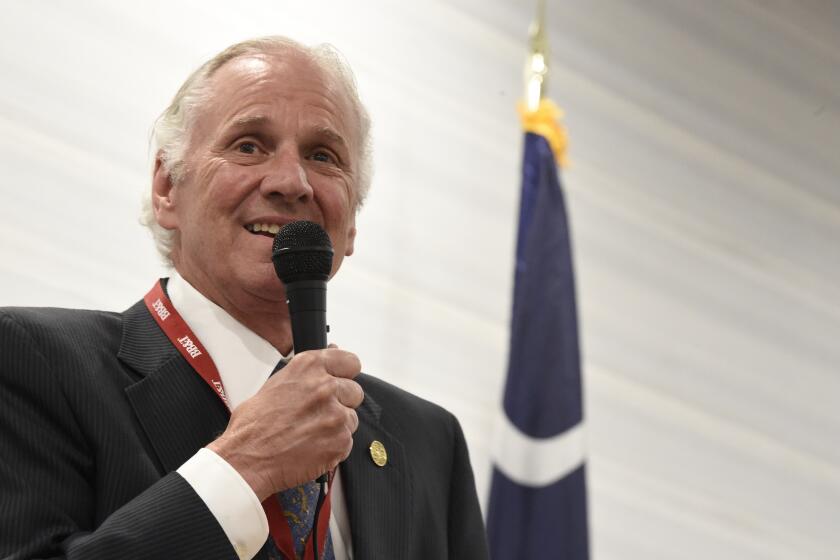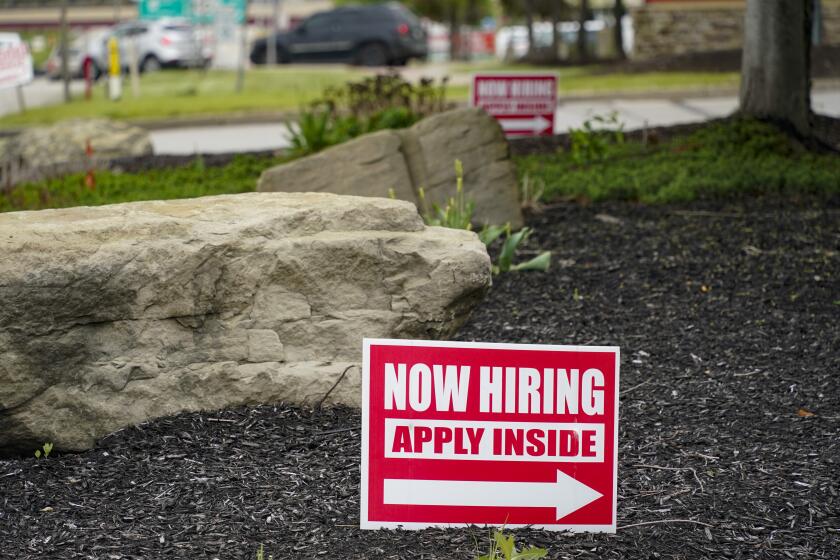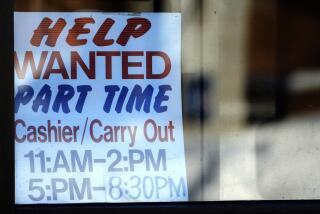Column: Unemployment benefits weren’t what kept workers home. The latest crummy jobs report proves it
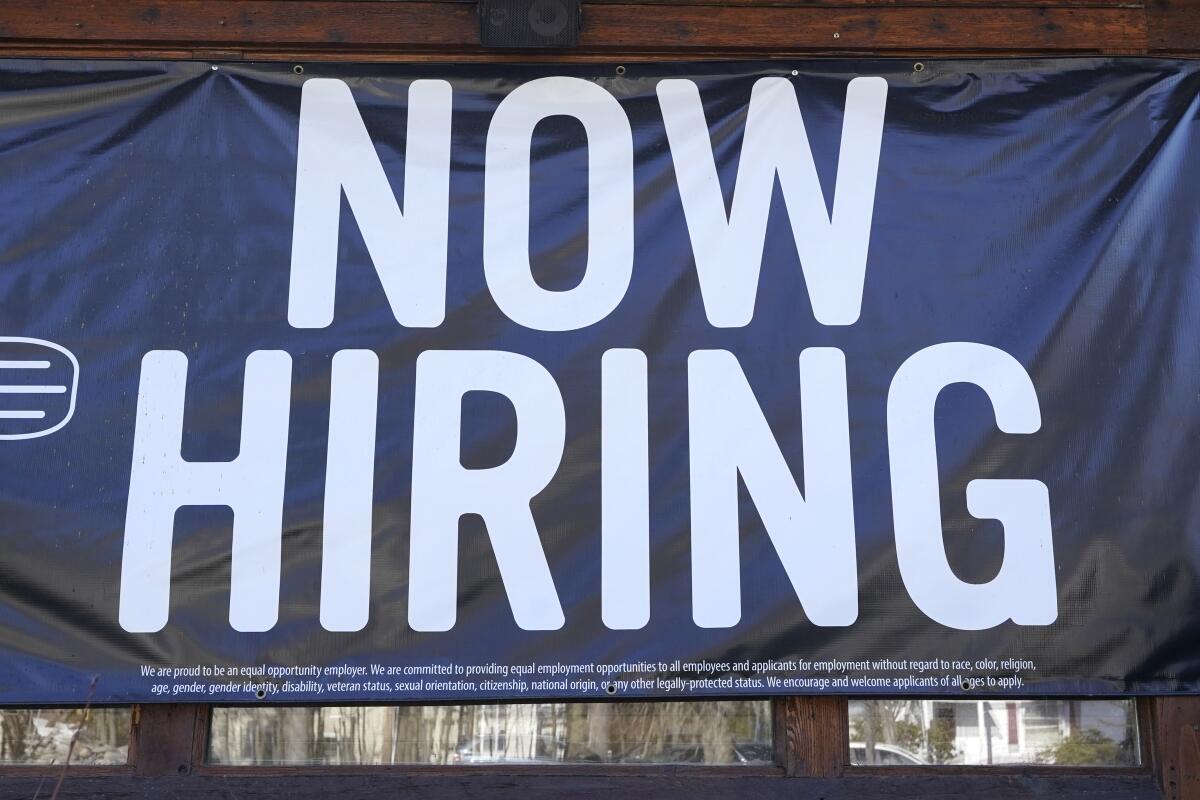
- Share via
The latest jobs report from the federal government, covering September employment, had some bad news and, so to speak, some better news.
The report, issued Oct. 8 by the Bureau of Labor Statistics, was a big miss compared with expectations — nonfarm employment rose by only 194,000, the bureau said, while economists were projecting 500,000 — and the weakest so far this year.
What was more encouraging about the generally dismal picture was that it ruled out a theme favored by conservative politicians and pundits. They had asserted that the federal boost to state unemployment benefits — which came to $300 a week this year, down from last year’s $600 a week — had kept workers glued to their living room couches instead of going out and getting a job.
Recent employment changes are challenging to interpret, as pandemic-related staffing fluctuations in public and private education have distorted the normal seasonal hiring and layoff patterns.
— Bureau of Labor Statistics
Convinced of their wisdom, 26 states, mostly red states, ended the federal program before it was scheduled to expire Sept. 6. Some cut off benefits as early as June 12.
The cutoff was accompanied by some intemperate commentary from the business community. John Kabateck, a spokesman for the National Federation of Independent Business, a small-business lobbying group, depicted recalcitrant workers as “remaining on the couch watching reruns of ‘Gilligan’s Island.’”
Get the latest from Michael Hiltzik
Commentary on economics and more from a Pulitzer Prize winner.
You may occasionally receive promotional content from the Los Angeles Times.
But the latest job figures point to different forces keeping workers at home. One explanation is surely the rise of the Delta variant of the coronavirus, which led to a resumption of business closures and renewed safety fears among workers in jobs requiring close contact with the public, such as retail and restaurant employees.
Delta-related school closings may also have placed a particular burden on working women. About 309,000 women ages 20 and older dropped out of the workforce in September. With a loss of about 40,000 women in August, the female civilian workforce declined by about 350,000, or 0.5%, in those two months, the first such declines in a year.
There are also signs that workers are showing new reluctance to return to lousy jobs, whether defined by low pay, abusive or hazardous workplaces, or limited opportunities for advancement.
So far, not very many workers have quit their jobs over COVID-19 vaccine requirements. But the rules have encouraged thousands to get vaccinated.
Some economists conjecture that savings from the higher unemployment benefits are giving these workers some breathing room to look for better work. That might be interpreted as justifying the impression that unemployment payments kept workers off the job, but in those cases the main result is still a job search, merely a more discerning one.
The government’s latest monthly Job Openings and Labor Turnover Summary, the so-called JOLTS report, underscores that the slow job recovery has much to do with workers looking for better work. According to the report, 4.3 million workers, or 2.9% of the labor force, quit their jobs in August. That’s the highest rate since the BLS began tracking the data in December 2000.
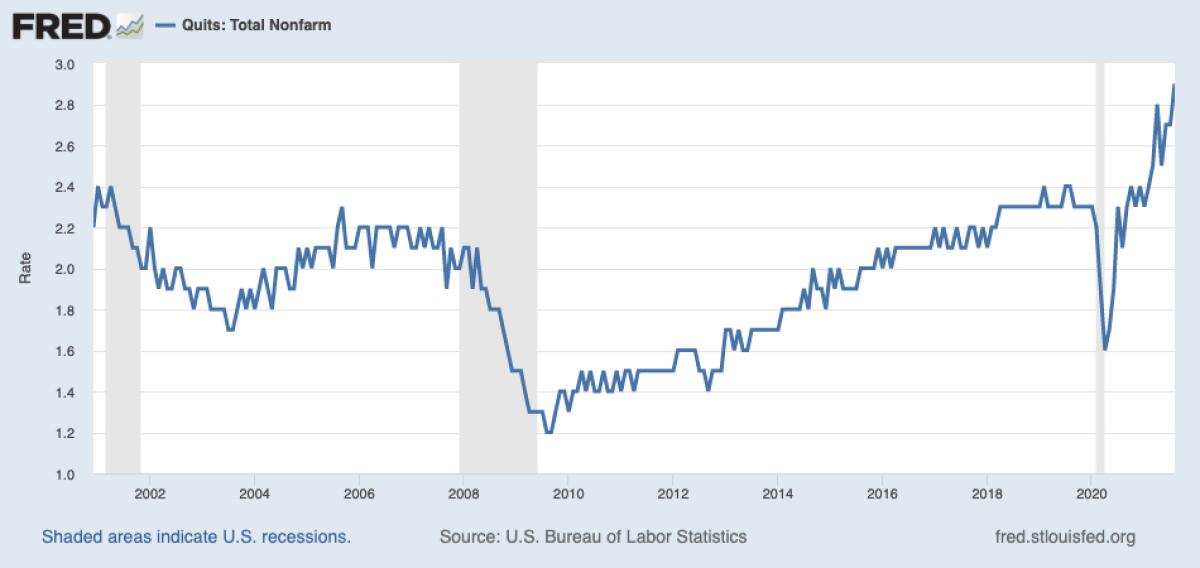
The statistics point to what may be a dramatic restructuring of the relationship between employers and labor: Workers are voting with their feet on pay and conditions in the American workplace. That signals the imperative for employers to treat employees less as disposable automatons than as human beings.
Recognition of the flaws in American employment trends has been emerging for years, signified by increasing doubts about the warehouse jobs offered by big retail operations such as Amazon’s. In 2020, the National Employment Law Project documented that turnover in California counties hosting Amazon fulfillment centers, where laborers are pushed to the physical limit to prepare orders for shipping, exceeded 100%.
“Instead of cultivating workers to stay with the company for the long term, Amazon relies on a high-churn model that uses and discards workers without regard for the cost to their health or potential disruptions to their lives, their families, and their communities,” NELP asserted.
As my colleague Anna M. Phillips reports, workers in the vast warehouses in the Inland Empire face long hours, unforgiving quotas and punishing heat.
A law signed last month by Gov. Gavin Newsom aims to rein in the harsh working conditions inside fulfillment warehouses and generally attributed to Amazon as the standard-setter in the industry. Amazon founder Jeff Bezos has called news reports portraying Amazon’s workers as “desperate souls ... treated like robots” inaccurate.
The job market seems to be exceptionally resistant to received political dogma. It’s not only that conservative politicians seem to have gotten the response to the cutoff of unemployment benefits wrong, but also fears of mass resignations in response to vaccination mandates have turned out to be groundless.
Firings and resignations seem to be significant in terms of raw numbers, but in virtually every case have amounted to no more than a percent or so of workforces. Meanwhile, vaccination rates in the healthcare sector, which was the first place that strict mandates were imposed, have been at the 90% level, even the high 90s, at subject facilities.
Parsing the impact unemployment insurance has on job growth has long been one of the most difficult analytical problems in economics. The pandemic hasn’t made it any easier, especially after the Delta variant turned recovery trends on their heads.
Evidence mounts that some employers can’t find workers because they’re jerks.
The Bureau of Labor Statistics figuratively threw up its hands when confronted with the September job report’s figures on education employment.
The statistics show job losses of 144,000 in local education (chiefly K-12 programs) and 17,000 at the state level (chiefly higher education). That brought the job losses since February 2020, at the dawn of the pandemic, to 310,000 in local government education and 194,000 in state government education.
“Recent employment changes are challenging to interpret,” the bureau said, “as pandemic-related staffing fluctuations in public and private education have distorted the normal seasonal hiring and layoff patterns.”
The fact remains that those who expected a surge of job applicants when the unemployment program ended have been confounded by its failure to show up. The hiring service Indeed reported last month that a pickup in job search wasn’t yet visible at that time. “Unemployed workers who weren’t searching urgently cited COVID fears, employed partners, and financial cushions,” Indeed reported.
One explanation may be that wage gains still aren’t strong enough to coax some people back to work — the Bureau of Labor Statistics said that hourly earnings rose by only about 0.6% for all civilian workers. That brings the wage increase to nearly 5% over the last year, which suggests that employers have finally seen the need to bid for employees.
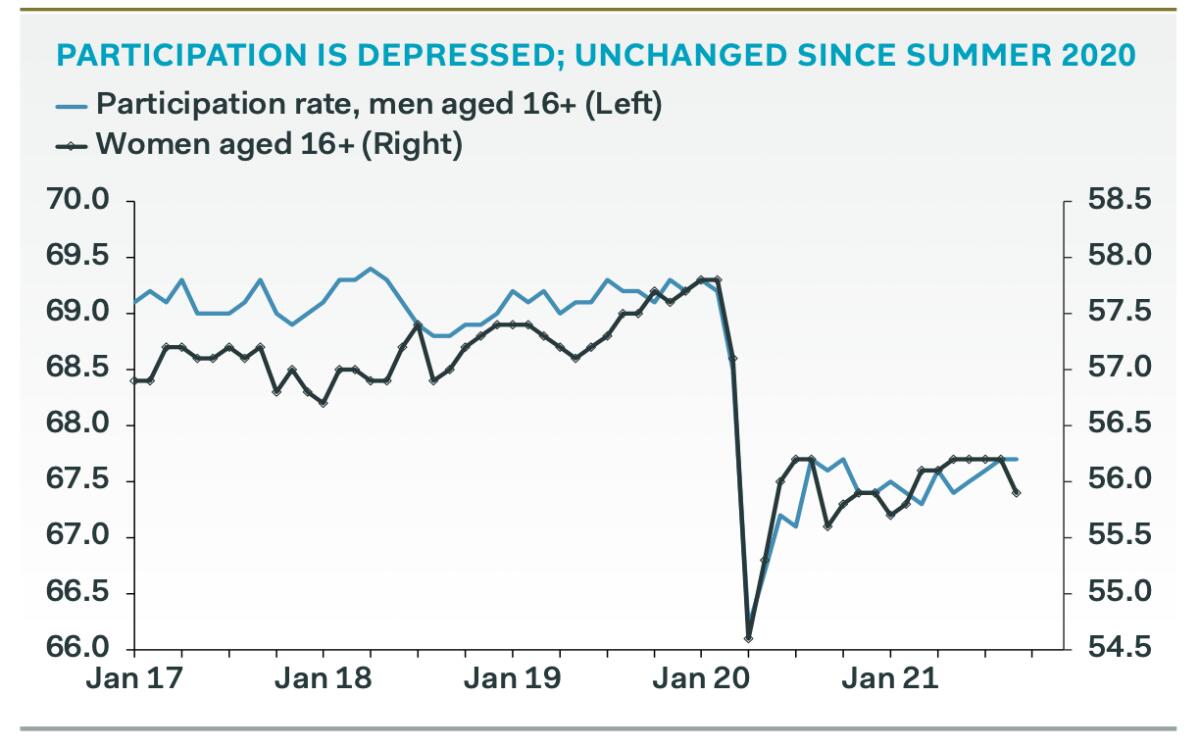
Some economists, such as Peter Ganong of the University of Chicago, found that states that cut off federal unemployment benefits early actually may have had modestly slower job growth than those that kept them.
That conformed to Ganong’s earlier research finding that the unemployment supplements were not “the key driver of the job-finding rate” through April and that U.S. policy was successful in protecting workers from income losses due to pandemic-related unemployment and had “minimal impacts on employment.”
To the extent that the cutoff of unemployment payments spurred workers to take jobs, they tended to be lower-income workers with little access to credit, said Kyle Coombs of Columbia University and colleagues.
For that reason, the authors observe, the unemployment benefit cutoff may have cost those cheeseparing states dearly — a drop of $4 billion in federal benefit payment in June through early August, offset by only $270 million in wage gains, producing a drop in consumer spending of $2 billion.
A pandemic-related boost in unemployment benefits ended this week, leaving many workers stranded.
It’s possible, even likely, that the jobs disappointment of September will yield to stronger gains through the end of this year and into 2022.
That’s the view of economist Ian Shepherdson of Pantheon Macroeconomics, who observes that “indicators of discretionary consumers’ spending — restaurant diner numbers, airline passenger traffic, and hotel occupancy — began to turn up in mid-September.” That was too late to show up in payroll figures this time around but could produce a happier jobs report next month.
That will happen especially if COVID cases and hospitalizations continue to fall, as finally started happening, allowing schools to stay open. That in turn would allow women to return to the workforce in large numbers.
The latest jobs report is a snapshot, and a murky one at that. But the story detectable through the fog is one of a job market still in the throes of dysfunction.
Pay isn’t good enough, working conditions are still lousy in what we like to describe as “essential jobs,” namely those serving consumers face to face. There are still 1.6 million more long-term unemployed than there were before the pandemic, and 5.5 million fewer Americans with jobs.
We have a ways to go before things are back to normal. But at least we know now that making life a bit easier for those thrown out of work didn’t harm the effort.
More to Read
Get the latest from Michael Hiltzik
Commentary on economics and more from a Pulitzer Prize winner.
You may occasionally receive promotional content from the Los Angeles Times.


